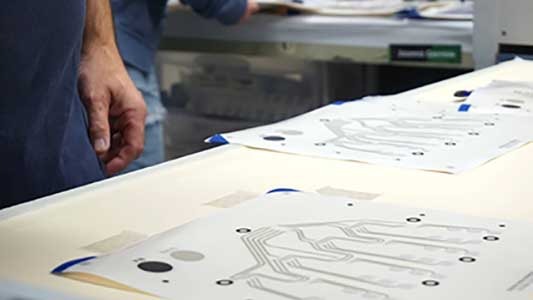Thermistors date back all the way to 1833 when they were first invented by Michael Faraday. Thermistors are resistance thermometers or a resistor whose resistance is dependent upon temperature. Hence the name, which is a combination of the words thermometer and resistor. Thermistors, although efficient, are rather bulky in size. With that being said, have you considered the alternative of an all-printed temperature sensor?
It’s no surprise that the future of remote healthcare has been quickly transitioning into the use of printed electronics and wearable technology. But what if there is a potential opportunity to create a printed temperature sensor? An all-printed temperature sensor is now currently in the works and should be expected to be on the market in the coming years. This sensor would be created through the use of printed biosensors and would provide patients the ability to monitor their temperature from a remote location easily and painlessly.
 What are Printed Electronics?
What are Printed Electronics?
Printed electronics
are made through a series of printing methods used to create electrical devices on various substrates. They are relatively low cost when compared to their traditional alternatives and help to add stretchability and flexibility to your product.
They are also relatively low power, meaning that less power is needed to function them. Because printed electronics are printed onto flexible substrates, they can be incorporated into curved surfaces, such as articles of clothing.
All-Printed Temperature Sensor
With the wearable technology industry quickly taking off, an all-printed temperature sensor is bound to be in the works. But what does this mean for the consumer and how will this be beneficial? With an all-printed temperature sensor, the technology can be added to articles of clothing. This would make temperature sensing easy and comfortable for the user, as temperature can be automatically read without them having to do anything other than simply wearing the smart garment.
Examples of garments that printed sensors could be implemented into are:
- Masks
- Headbands
- Shirts
- Arm sleeves
- Helmets/Hardhats
Infant Health Monitoring
This could be extremely beneficial, especially for remote health monitoring of an infant. Fevers are extremely common in newborns and toddlers but if they are left undiagnosed or noticed, they can be extremely harmful to their health. By incorporating an all-printed temperature sensor into clothing for babies, temperature monitoring would be easily monitored to ensure their health and wellbeing.
 Heat Exhaustion Monitoring
Heat Exhaustion Monitoring
With the summer months rolling in, we must be extremely cautious of our body’s health. Especially for those who work in construction or whose day to day jobs involve being outside in harsh conditions for several hours.
Heat exhaustion is extremely dangerous and can have serious health effects if untreated or unnoticed. But what if temperature sensors could be incorporated into their daily work routine? By simply wearing a headband or a hard hat with an all-printed temperature sensor, these vitals can be monitored throughout their day. It could provide them warnings as their temperature begins to rise and warn them of potential overheating or heat exhaustion.
Thermistors are extremely bulky and can do more harm than they can good. By incorporating an all-printed temperature sensor into your daily routine, you’ll be able to monitor your temperature and health from a remote location. The future of remote health monitoring revolves around printed electronics and wearable technology. The question is, are you willing to take the first step?
If you’re interested in printed electronics or would like to get your next project started, reach out! We’ll be happy to help you.
 Meet the Author: Jaclyn King
Meet the Author: Jaclyn King
Jaclyn is a Digital Marketing Specialist on the BTI Team. Her main job responsibilities involve inbound marketing, content creation, and social media management. To get to know more about Jaclyn, check her out on LinkedIn!